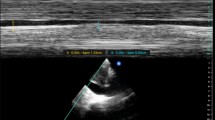Abstract
Background
Emergency thoracotomy (ET) is a procedure that provides rapid access to intrathoracic structures for thoracic trauma patients arriving at the hospital in extremis. This study assesses the accessibility of intrathoracic structures provided by six different ET incisions. We hypothesize that the bilateral anterior thoracotomy (“clamshell” incision) provides the most rapid and definitive accessibility to intrathoracic structures.
Methods
Six ET incision types (left anterolateral thoracotomy, right anterolateral thoracotomy, left 2nd intercostal space incision, left 3rd intercostal space incision, median sternotomy, and bilateral anterior thoracotomy) were performed multiple times on eight cadavers. The critical intrathoracic structures were assessed for rapid accessibility and control, and they were characterized as “readily accessible,” “accessible,” and “inaccessible” on anatomic accessibility maps.
Results
Median sternotomy provided better access to intrathoracic structures than left and right anterior thoracotomies. Definitive control of the origin of the left subclavian artery was difficult with left 2nd or 3rd intercostal space incisions. Bilateral anterior thoracotomy, the clamshell incision, was easy to perform and gave superior access to all intrathoracic structures.
Conclusions
In severe thoracic trauma, specific injuries are unknown, even if they can be anticipated. The best incision is therefore one that provides the most rapid and definitive access to all thoracic structures for assessment and control. While the right and left anterolateral incisions may be successfully employed by surgeons with extensive experience in ET, the clamshell incision remains the superior incision choice.
Level of Evidence II
Observational study.



Similar content being viewed by others
References
MacKenzie EJ, Fowler CJ (2000) Epidemiology. In: Mattox KL, Feliciano DV, Moore EE (eds) Trauma, 4th edn. McGraw-Hill, New York, p 21
Odell JA (1999) Thoracotomy. In: Westaby S, Odell JA (eds) Cardiothoracic trauma. Arnold, London, pp 138–146
LoCicero J, Mattox KL (2004) Epidemiology of chest trauma. Emerg Med Serv 33:44–47
Leppaniemi AK (2001) Thoracoscopy in chest trauma: an update. Trauma 3:111–117
von Oppell UO, Bautz P, De Groot M (2000) Penetrating thoracic injuries: what we have learnt. Thorac Cardiovasc Surg 48:55–61
Kish G, Kozloff L, Joseph WL et al (1976) Indications for early thoracotomy in the management of chest trauma. Ann Thorac Surg 22:23–28
Wall MJ Jr, Storey JH, Mattox KL (2000) Indications for thoracotomy. In: Mattox KL, Feliciano DV, Moore EE (eds) Trauma, 4th edn. McGraw-Hill, New York, p 473
Brautigan MW (1991) Patient selection in emergency thoracotomy. Resuscitation 22:103–108
Champion HR, Danne PD, Finelli F (1986) Emergency thoracotomy. Arch Emerg Med 3:95–99
Vallejo-Manzur F, Varon J, Fromm R Jr et al (2002) Moritz Schiff and the history of open-chest cardiac massage. Resuscitation 53:3–5
Absolon KB (1983) Theodor Billroth and cardiac surgery. J Thorac Cardiovasc Surg 86:451–452
Rehn L (1897) Ueber penetrirende herzwunden und herznaht. Arch Klin Chir 55:315–329
Biffl WL, Moore EE, Harken AH (2000) Emergency department thoracotomy. In: Mattox KL, Feliciano DV, Moore EE (eds) Trauma, 4th edn. McGraw-Hill, New York, p 245
Kouwenhoven WB, Jude JR, Knickerbocker GG (1960) External cardiac resuscitation. JAMA 173:1064–1067
Beall AC Jr, Diethrich EB, Cooley DA et al (1967) Surgical management of penetrating cardiovascular trauma. South Med J 60:698–704
Hunt PA, Greaves I, Owens WA (2006) Emergency thoracotomy in thoracic trauma—a review. Injury 37:1–19
Westaby S (1999) The pathophysiology of chest trauma. In: Westaby S, Odell JA (eds) Cardiothoracic trauma. Arnold, London, pp 3–22
Boffard KD (2003) The chest. In: Boffard KD (ed) Manual of definitive surgical trauma care. Arnold, London, pp 86–94
Brohi K (2006) Emergency department thoracotomy—indications and technique of resuscitative thoracotomy. www.trauma.org/index.php/main/article/361/ Accessed 12 Feb 2013
Karmy-Jones R, Nathens A, Jurkovich GJ et al (2004) Urgent and emergent thoracotomy for penetrating chest trauma. J Trauma 56:664–669
Wise D, Davies G, Coats T et al (2005) Emergency thoracotomy: “how to do it”. Emerg Med J 22:22–24
Morgan BS, Garner JP (2009) Emergency thoracotomy—the indications, contraindications and evidence. J R Army Med Corps 155:87–93
Voiglio EJ, Coats TJ, Baudoin YP et al (2003) Thoracotomie transverse de réanimation. Ann Chir 128:728–733
Lewis G, Knottenbelt JD (1991) Should emergency room thoracotomy be reserved for cases of cardiac tamponade? Injury 22:5–6
Grove CA, Lemmon G, Anderson G et al (2002) Emergency thoracotomy: appropriate use in the resuscitation of trauma patients. Am Surg 68:313–316
American College of Surgeons-Committee on Trauma (Working Group, Ad Hoc Subcommittee on Outcomes) (2001) Practice management guidelines for emergency department thoracotomy. J Am Coll Surg 193:303–309
Durham LA, Richardson RJ, Wall MJ et al (1992) Emergency centre thoracotomy: impact of prehospital resuscitation. J Trauma 32:775–779
Harnar TJ, Oreskovich MR, Copass MK et al (1981) Role of emergency thoracotomy in the resuscitation of moribund trauma victims: 100 consecutive cases. Am J Surg 142:96–99
Danne PD, Finelli F, Champion HR (1984) Emergency bay thoracotomy. J Trauma 24:796–802
Coats TJ, Keogh S, Clark H et al (2001) Prehospital resuscitative thoracotomy for cardiac arrest after penetrating trauma: rationale and case series. J Trauma 50:670–673
Davies GE, Lockey DJ (2011) Thirteen survivors of prehospital thoracotomy for penetrating trauma: a prehospital physician-performed resuscitation procedure that can yield good results. J Trauma 70:E75–E78
Beall AC, Diethrich EB, Crawford HW et al (1966) Surgical management of penetrating cardiac injuries. Am J Surg 112:686–692
Bastos R, Baisden CE, Harker L et al (2008) Penetrating thoracic trauma. Semin Thorac Cardiovasc Surg 20:19–25
Feliciano DV, Mattox KL (1981) Indications, technique and pitfalls of emergency centre thoracotomy. Surg Rounds 4:32–40
Hirshberg A, Mattox KL (2005) Top knife. TFM Publishing Ltd, Shrewsbury, p 159
Sciarretta JD, Asensio JA, Vu T et al (2011) Subclavian vessel injuries: difficult anatomy and difficult territory. Eur J Trauma Emerg Surg 37:439–449
Author information
Authors and Affiliations
Corresponding author
Additional information
Illustrations by Eric R. Simms and Eric J. Voiglio.
Rights and permissions
About this article
Cite this article
Simms, E.R., Flaris, A.N., Franchino, X. et al. Bilateral Anterior Thoracotomy (Clamshell Incision) Is the Ideal Emergency Thoracotomy Incision: An Anatomic Study. World J Surg 37, 1277–1285 (2013). https://doi.org/10.1007/s00268-013-1961-5
Published:
Issue Date:
DOI: https://doi.org/10.1007/s00268-013-1961-5




